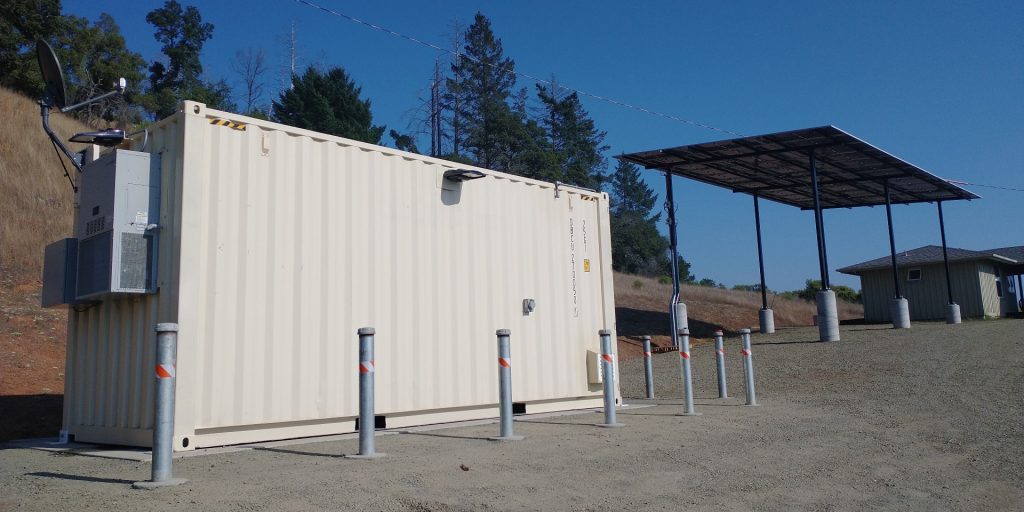
PG&E, California’s largest utility, just brought its first renewable remote grid online, in a nature preserve in Sonoma County.
The fully renewable remote grid at Pepperwood Preserve replaces 0.7 miles of overhead distribution line, eliminating wildfire risk from overhead power lines.
Throughout PG&E’s 70,000-square-mile service area, remote customers are served via long electric distribution lines that traverse high fire-risk areas. Replacing these distribution lines with a remote grid can cost-effectively meet customer needs and reduce fire ignition risk.
Pepperwood Preserve is a 3,200-acre biological reserve that hosts the Dwight Center for Conservation Science in the Mayacamas Mountains. It’s a hub for climate monitoring, applied research, science education, and wildfire resilience demonstration projects, such as the now extensive ALERTWildfire camera network.
The preserve is a crucial place to eliminate wildfire risk because it’s home to more than 900 species of native plants and wildlife. The Tubbs fire directly impacted it in October 2017, and the Kincade fire did as well in October 2019. The new remote grid will power Pepperwood’s Bechtel House, which houses overnight visitors.
Grass Valley, California-based microgrid developer BoxPower, under contract with PG&E, designed, built, and will maintain the renewable remote grid at Pepperwood. The system includes a BoxPower SolarContainer featuring a battery energy storage system built at the BoxPower facility in Grass Valley, less than two months before being transported to the site. A canopy solar array powers the battery storage.

BoxPower cofounder and chief financial officer Anderson Barkow said:
We are proud to have designed and built not only PG&E’s first remote grid, but also their first 100% renewable standalone power system.
Reducing wildfire risk in areas like Pepperwood is critical for the surrounding communities and the native wildlife that collectively call this place home. This cost-effective approach to wildfire mitigation provides an excellent blueprint for implementation across potentially hundreds of remote sites.
The remote grid at Pepperwood is PG&E’s fifth operational remote grid since 2021.
Photos: PG&E
To limit power outages and make your home more resilient, consider going solar with a battery storage system. In order to find a trusted, reliable solar installer near you that offers competitive pricing, check out EnergySage, a free service that makes it easy for you to go solar. They have hundreds of pre-vetted solar installers competing for your business, ensuring you get high quality solutions and save 20-30% compared to going it alone. Plus, it’s free to use and you won’t get sales calls until you select an installer and you share your phone number with them.
Your personalized solar quotes are easy to compare online and you’ll get access to unbiased Energy Advisers to help you every step of the way. Get started here. – ad
FTC: We use income earning auto affiliate links. More.



Comments